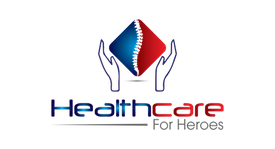Advanced Muscle Integration Technique
1. WHAT IS A.M.I.T. ?
Advanced Muscle Integration Technique system of analysis performs a functional evaluation of 720 muscles in the body. This treatment helps to restore the injured or affected area of complaint experienced by most active people.
2. HOW DOES THIS WORK?
Seven separate reflex centers are treated and adjusting of three spinal segments re-activates proper neurological function for that muscle. Once reactivated, the muscles are now prepared to respond to strength exercises
3. WHAT ARE THE RESULTS?
Complete pain free function. This system not only diagnoses the condition, but also determines the reason for the pain. The root cause is corrected rather than only treating the symptoms.
Pain is one way the body communicates with the body’s intelligence. The body’s intelligence will always guide the practitioner to the root of all imbalances within the body.
4. HOW CAN INJURIES BE PREVENTED?
This system allows for injuries to be predicted and prevented by defining vulnerabilities through a systems guided approach to assessment, diagnosis and therapy of the most common orthopedic conditions experienced by active people.
5. WHAT IS THE PRIMARY BASE OF THE TREATMENTS?
Pain is the body’s “communication system” and is an indication something may be wrong. We discovered years ago the primary cause of joint and muscle pain is the result of muscles that have been injured in some way. When a muscle is injured, the nerve centers where the muscle attaches to the bone inhibit the muscle to protect it from major damage. The muscle will still contract during motion, but if the muscle is stressed it will give way due to the pain response at these nerve centers.
Other muscles have to adapt to take over the loss of muscle function. At the unconscious level the body avoids using the injured muscle and our pain goes away. As time passes more and more muscles become injured and inhibited. Eventually the ability to adapt from muscles that do not work efficiently is lost and chronic pain occurs.
6. WHAT CONDITIONS ARE TREATED?
Acute and chronic conditions such as: patellar tendonitis and other knee problems, shin splints, illiotibial band (IT) syndrome, bursitis, tendonitis, plantar fasciitis, shoulder conditions including frozen shoulder syndrome, conditions of the spine including sciatica, headaches including migraines, sinus problems, concussions, carpal tunnel syndrome, tennis elbow, reflux, ankle sprains, hip conditions, whiplash, systemic conditions, and all athletic injuries.
7. WHAT IS THE AVERAGE NUMBER OF INHIBITED MUSCLES SEEN IN PATIENTS?
By the time people come in for treatment they have accumulated a lifetime of imbalances. The majority enters the office with 40 to 50 muscle systems affected.
Many muscles are inhibited because the anchor muscles have become inhibited. Once the anchor muscle is treated, many inhibited ‘helper’ or synergist muscles begin to work again without being treated. This decreases the number of office visits required.
8. WHAT ARE COST OF TREATMENTS?
| AMIT Treatment per muscle | $27.50 |
| Focused Muscle Exam | $62.50 |
9. HOW LONG DOES EACH APPOINTMENT TAKE?
Office calls are based on ten-minute time units. We schedule 1 unit (10 minutes) for each muscle.
10. WHAT DO I WEAR TO AN APPOINTMENT?
Due to the amount of bodywork, loose fitting and comfortable clothing is recommended. Levis and dresses make it difficult for us to treat comfortably.
11. WHAT IS EXECUTIVE PACKAGE?
Many patients fly in from other states and countries for care. Treatment plans usually require patients to come to the clinic two to three times a week for several weeks. Due to long distance travel, it can be difficult to meet this requirement. An hourly after hour visit is offered consisting of concentrated treatment to facilitate the necessary changes. For this service, the charge is $500.00 per hour. This saves time and travel costs.
12. WHAT ARE POST TREATMENT GUIDELINES?
Due to restructuring the function of the body, it is recommended that patients do not participate in aggressive athletic activities. As treatment therapy progresses, targeted exercises will be prescribed to assist in rehabilitating the muscles optimal function. Once stability is created, regular athletic activities can begin.
